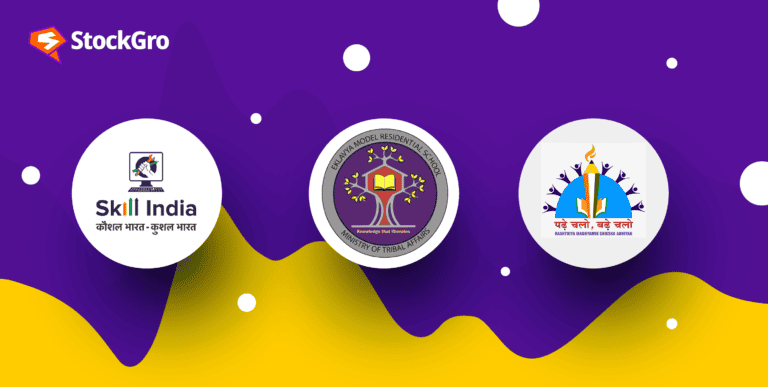
Being financially literate is more crucial than ever in today’s world. This means knowing how to create a budget, invest wisely, and manage money. Given the complexity and diversity of India’s socio-economic landscape, the value of financial literacy becomes even more apparent.
The focus of this article is the key components of financial literacy. It provides a comprehensive overview of the topic.
Key components of financial literacy
Nowadays, knowing one’s financial situation is crucial. Every individual should aim to possess this skill, as it is an essential tool for making educated and meaningful decisions about money.
A solid grasp of financial matters is essential in a fast-paced economy like India to promote financial inclusion, reduce poverty, and accelerate economic growth.
Being financially literate entails more than knowing how to check your bank balance or knowing a little about financial resources. Many components need to be considered when managing finances. But what are the four main components of financial literacy? These are Budgeting, Managing debt, Investing, and Saving.
Let’s look at each of these 4 components of financial literacy in detail now.
Budgeting: Managing your finances
An individual’s basic budget is the financial activity for a fixed time frame. It serves as a financial road map, showing you where you should invest your money depending on your income and expenditures.
Avoiding debt, saving for the future, and living within means are all made easier with a budget. It also helps you keep tabs on your money, so you can plan ahead and make better choices.
There are primarily three stages to developing a budget:
- Income assessment: To make a budget, this is the initial stage. In this step, you need to list down all your income sources.
- Expense tracking: In this step, you need to list down all your expenses. It is necessary to keep track of all expenses, both fixed and variable. Fixed expenses include things like rent or mortgage payments, whereas variable expenses include things like spending on groceries or entertainment.
- Goal setting: Your financial objectives and dreams can be laid out here. These monetary objectives should be carefully considered, whether they are to pay off debt, save for a vacation, or establish an emergency fund.
The advantages of creating a budget go well beyond material prosperity. This practice can reduce financial stress and foster self-discipline. Creating a budget is a great first step if you want to take charge of your financial situation and lay the groundwork for long-term stability and growth.
Also read: What is a budget – A beginner’s guide
Saving: Building a financial safety net
Knowing how important it is to put money aside is a key financial literacy component. It helps people reach their future financial goals and serves as a safety net in case of unexpected costs.
You need to save up if you want to accomplish many things with your money, like buying a house, saving for an emergency fund, or taking that dream vacation. It enables you to transform these dreams into concrete accomplishments.
Having a solid grasp of the difference between immediate and distant savings objectives is critical. Goals that are considered short-term are usually accomplished within a year or two, and they include things like saving for a vacation or an emergency fund.
On the other hand, you need to save and invest differently for longer-term objectives like retirement or a child’s education.
An abundance of self-restraint and careful planning are prerequisites for effective money saving. A couple of methods are presented here:
- Automating savings: The savings process can be greatly improved by automating it. A foolproof method to guarantee regular monthly savings is to set up automated transfers from your checking to your savings account.
- Setting up emergency funds: Having a savings cushion is crucial in case of sudden expenses. Maintaining this fund with three to six months’ worth of expenses is a solid standard of practice.
You can achieve your financial goals and establish a strong financial safety net by applying these strategies.
Investing: Growing your wealth
Allocating capital with the expectation of future gain is known as investing. Building wealth and advancing one’s financial situation are both made easier with this tool.
Many investment opportunities exist, each with its own unique potential rewards and risks. Some of these are:
- Stocks: The holder of these securities has the right to a portion of the profits and assets of the company, which is a representation of ownership.
- Bonds: Fixed interest is paid on these debt securities. In a bond, an investor lends money to a public or private entity (the “issuer”) and receives interest payments at regular intervals and the principal back when the bond matures.
- Mutual funds: The term “mutual fund” refers to an investment product that allows various individuals to combine their capital in order to buy a diversified portfolio of assets.
- Real estate: Buying and holding properties or investing in real estate investment trusts (REITs) are two ways to invest in real estate.
If you want to make money investing, you need to know how risk affects return. Greater risk is usually associated with investments that have higher potential returns. Before you make any investment decisions, you must determine your risk tolerance.
It is important to consider your risk tolerance, financial objectives, and time horizon when making investment choices. Your time horizon determines how long you will hold your investments, your risk tolerance determines how much risk you are willing to take, and your financial goals determine the outcomes you aim to achieve.
Investing can improve one’s financial situation and help build wealth over time if one knows what they’re doing.
Also read: Your guide to real estate investment trusts
Managing debt: Breaking free from financial burdens
Many people view debt as a two-sided coin regarding personal finance. On the one hand, it has the potential to be a helpful resource, opening doors to major purchases like a house or a college degree that people would have trouble affording otherwise.
Debt, however, can become a manageable burden that blocks financial stability and advancement if not managed properly.
Different types of debt are marked by different traits and have different results. Credit card debt, for instance, typically develops when people charge more than they earn, accumulating interest charges.
Borrowing money to pay for school is known as a student loan, and it’s a common form of debt. Individuals can purchase homes through mortgages and loans backed by real estate.
To be financially literate, you must be able to handle debt responsibly. Identifying the type of debt you have, making a strategy to repay it, and putting measures in place to lower it are all part of debt management. It is a smart financial move that helps you get out of debt faster.
An effective approach is the so-called “avalanche method,” which entails paying off high-interest debt first. With this strategy, you’d prioritise paying off the loan with the highest interest rate by allocating more funds towards it.
An important aspect of managing debt effectively is maintaining a balanced debt-to-income ratio. The ratio of your monthly gross income to your total debt payments is a good indicator of your financial health.
This ratio is an important sign. If the ratio is lower, lenders may see a more favourable balance between your debt and income.
Also read: The simplicity and enigma of debt to equity ratio
Bottomline
Developing financial literacy is an ongoing rather than a final goal. It’s all about knowing how to manage your money, creating a budget, saving money, investing, and getting out from under your debt.
Our ability to understand and succeed in India’s complex financial environment depends on our familiarity with these areas of financial literacy.

